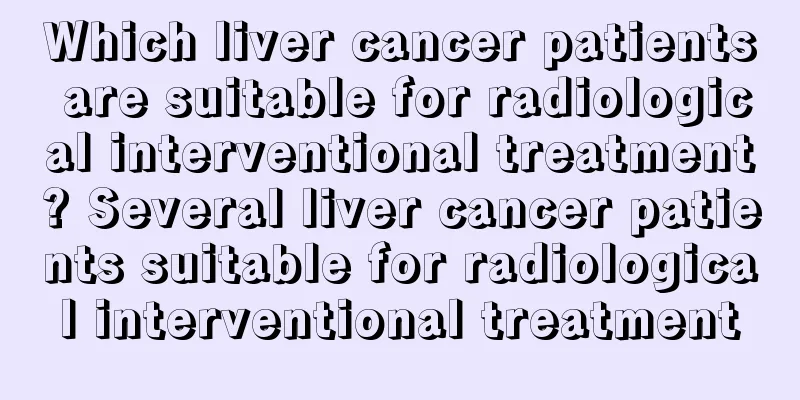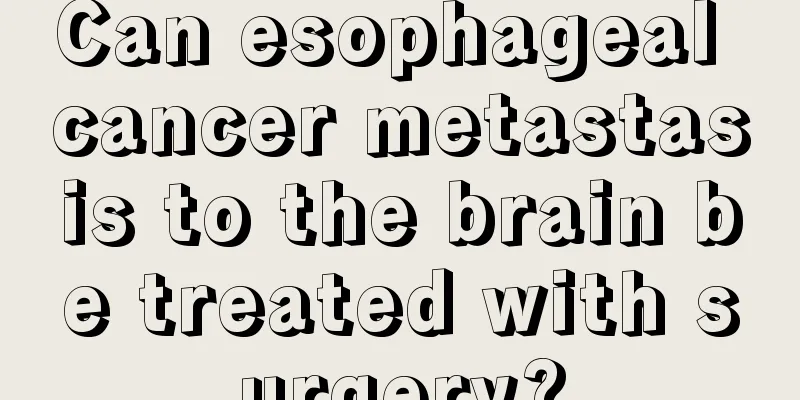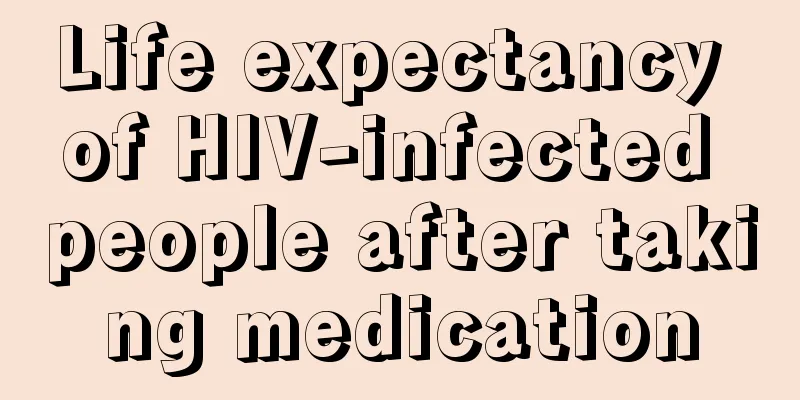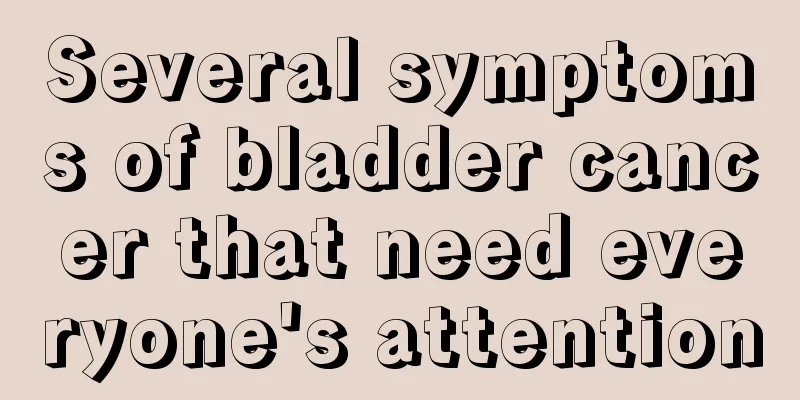Which liver cancer patients are suitable for radiological interventional treatment? Several liver cancer patients suitable for radiological interventional treatment

|
What is interventional treatment? Interventional treatment is an emerging treatment method between surgical and internal medicine treatment, including intravascular intervention and non-vascular intervention. After more than 30 years of development, it has now become one of the three pillar disciplines along with surgery and internal medicine. Simply put, interventional treatment is a minimally invasive treatment method that treats local lesions under the guidance of imaging equipment (angiography, fluoroscopy, CT, MR, B-ultrasound) by making tiny channels with a diameter of several millimeters on the blood vessels or skin without exposing the lesions through surgery, or through the original channels of the human body. Which liver cancer patients are suitable for radiological interventional treatment? For patients with a history of chronic liver disease or cirrhosis. If liver cancer is confirmed and the lesions are limited to the liver, no matter the size or number of the tumors, radiological intervention is necessary. Radiological intervention can detect all lesions in the liver through angiography. Local perfusion chemotherapy can cause a much stronger attack on the liver tumor than systemic chemotherapy. Iodized oil embolization can block the blood supply to the tumor and cut off the nutrition supply to the tumor. At least the condition can be controlled in a short period of time. Time is bought for other treatments. How long the effect of iodized oil embolization can last depends on the patient's age and liver condition. When the patient is young, the blood vessels are easy to be revascularized. That is, new blood vessels grow, forming collateral circulation, taking away the iodized oil, and the effect of embolization disappears. If there is no cirrhosis, young people have strong regenerative ability, and new blood vessels will form in about 20 days. For people over 40 years old, if they also have cirrhosis. The effect of embolization may last for 2 to 3 months. Therefore, radiological interventional therapy is more effective for patients over 40 years old than for patients around 30 years old. Radiological interventional therapy can be repeated. However, the stimulation of local high-concentration chemotherapy, the radiation damage caused by radiological operation, and the local ischemia caused by iodized oil embolism will affect liver function. Therefore, liver protection treatment after radiological interventional therapy is indispensable. Radiological interventional therapy, which reduces liver function damage to a minimum, is effective for patients with lesions limited to the liver. The extension of survival is obvious. There are many patients over 40 years old who survive for more than two years. Therefore, radiological interventional therapy should be the first choice for the treatment of liver cancer confined to the liver. Even if the lesion has invaded outside the liver, if the patient is in good general condition and has no ascites, and the doctor determines that the catheter can be inserted into the hepatic artery, radiological interventional therapy should be performed first. The primary lesion can be initially controlled, and the patient's overall condition will be further improved. Other methods can then be used to treat lesions throughout the body. Radiological therapy It is to use radiation (60Co, accelerator) to perform radiotherapy on liver lesions. It is also effective for patients whose lesions are confined to the liver. When the lesions in the liver are basically controlled, radiotherapy can also be performed on extrahepatic lesions such as lung metastases and supraclavicular lymph node metastases. The liver is particularly sensitive to radiation, and the adverse reactions to whole liver radiotherapy are very severe, and patients often cannot persist. In order to achieve both efficacy and prevent patients from experiencing such severe adverse reactions, 60Co was often used for moving strip irradiation in the past. That is, the liver is divided into several small strips of 2.5 cm wide. On the first day, irradiate the first strip, on the second day, irradiate strips 1 to 2, on the third day, irradiate strips 1 to 3, on the fourth day, irradiate strips 1 to 4, and on the fifth day, irradiate strips 2 to 5. Move down in sequence until all strips are irradiated. The advantage of this method is that the irradiation dose is not large, but the actual dose received by the tumor is high, and the adverse reactions are significantly lower than whole liver irradiation. Now radiotherapy in various hospitals has basically been replaced by accelerators. Accelerators are not suitable for moving strip irradiation. Block irradiation is mostly used. Divide the liver into 4 blocks, that is, 4 radiation fields. One-day radiation is used for 1 to 3 fields, and two-day radiation is used for 2 to 4 fields. It is best to do radiotherapy on the shrunken mass after radiotherapy intervention. Try to reduce the amount of radiation received by normal liver tissue, and the patient's adverse reactions will be greatly reduced. The smaller the area of the radiation field, the fewer adverse reactions there will be. The principle is that no tumor should be missed. |
Recommend
Can pressed powder replace liquid foundation?
Pressed cake is also a kind of cosmetics. It belo...
How to treat appendicitis? It turns out there are several methods
Appendicitis is a common disease in daily life, a...
Symptoms of recurrence of cervical cancer after surgery
Cervical intraepithelial neoplasia is a malignant...
Can sweet potatoes and broad beans be eaten together?
Spring is the season for eating broad beans. Ther...
How to treat myofascial pain syndrome
Myofascial pain syndrome requires timely treatmen...
What should I do if there is tartar inside my teeth
Teeth need to be cleaned every day to remove the ...
Can peppermint essential oil be used on the face?
In real life, most essential oils are extracted f...
What is the key method to prevent bladder cancer?
Bladder cancer also has the characteristic of fam...
Complications of quitting smoking
After quitting smoking, many people will experien...
What to eat for nasopharyngeal cancer
Patients with nasopharyngeal cancer can eat high-...
Will renal hamartoma lead to abnormal urine crystals?
Renal hamartoma is a benign tumor caused by abnor...
Brief analysis: Early symptoms of brain cancer
What are the early symptoms of brain cancer? Brai...
Chronic pharyngitis with blood in sputum in the morning
As we all know, chronic pharyngitis is a disease ...
Urinary dysfunction is usually seen in most cases of prostate cancer
Urinary dysfunction is usually seen in most cases...
How many kinds of green tea are there
There are many types of green tea, the most commo...









